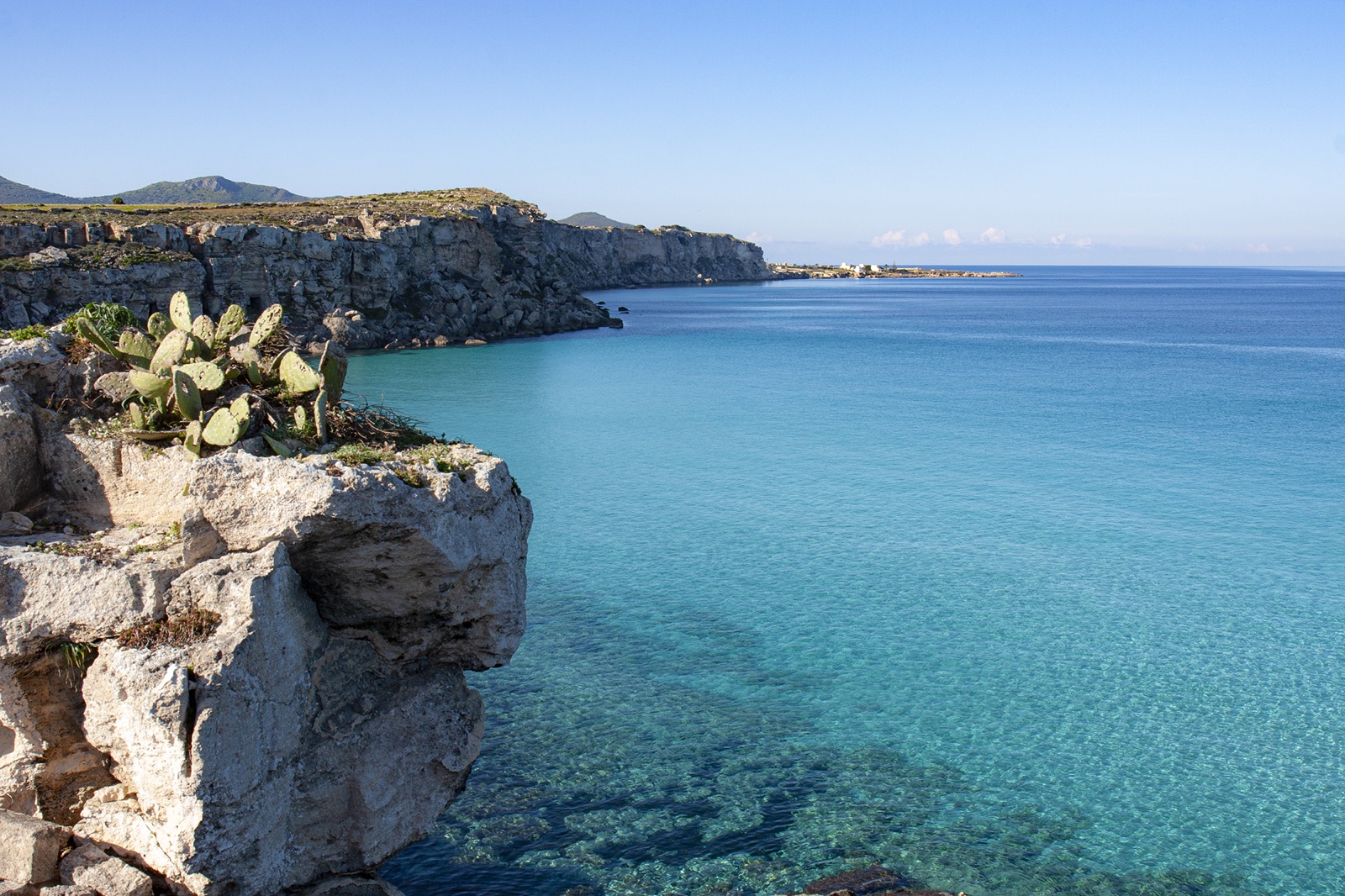The Coastal Marine Environment of Favignana
The Island of Favignana is the largest of the islands, with an area of 19 km2 and a coastal development of about 33 kilometers. The marine area is subject to protection constraints regulated for zones C and B.
The island is characterized by a landscape that reflects its geological and lithological features. The eastern part of the island, where the town of Favignana is located, is characterized by an extensive sub-flat area made up of limestone: a rock with characteristic yellowish colors, which has been heavily extracted on the island with various cultivation methods. The western zone of the island has a morphology with rather steep slopes, in correspondence with Mount S. Caterina, which then slopes gently towards the coastline. In the foothill area of Mount S. Caterina, the erosive action of atmospheric agents has led to the formation of debris accumulations that partly conceal the terraced coastal forms produced by the erosive action of the sea on the rock. The coastline is very jagged, with more or less deeply incised bays depending on the intensity of the marine action. More or less vast and irregular cavities are located at different altitudes, whose genesis is connected to very common karst phenomena on the island.
Among the natural emergencies that characterize the seabeds, the meadows of Posidonia oceanica, a priority habitat (Habitat Directive 43/92/EEC), represent the most important biocenosis as they are particularly abundant and distributed quite continuously around the island. The presence of flowers, fruits, and seeds allows to distinguish the P. oceanica plant from algae, which form extensive populations in most of the seabeds accessible to divers. The posidonia meadow is one of the most important ecosystems in the Mediterranean and constitutes a habitat of great value for the ecological role it plays and for the associated biodiversity: it is a high primary productivity ecosystem, produces oxygen, is a reproduction and nursery area for many species, reduces the energy of currents and waves, contributes to the stability of the seabeds, and protects beaches thanks to the accumulation of washed-up leaves. The "ecological" services provided by the posidonia meadow, including protection from coastal erosion, the refuge of fish species, and oxygen production, constitute a significant economic value.
In the shallower environments of the rocky seabeds of Favignana, it is possible to observe two natural emergencies: concretions that develop where the wave hits due to the gastropod Dendropoma petraeum and in the less illuminated environments of the infralittoral zone, the band formed by the orange colonial madreporary Astroides calycularis. Both D. petraeum and A. calycularis are endangered or threatened species of extinction for the Mediterranean. In addition, the presence of more or less deep shoals with overhanging walls favors the development of concretions in poorly illuminated environments and of coralligenous, while the roughness of the substrate, the fissures, and the submerged caves favor the settlement of larvae and constitute habitat and shelter for cryptic fauna, including crustaceans and fish. It is absolutely worth mentioning the presence of three rather rare species for the Mediterranean, of high biological value and undoubted attraction for underwater tourism: the ophiura Astrospartus mediterraneus, colonies of the cnidarian Savalia savaglia, improperly called 'black coral', observable on coralligenous seabeds already at 28 m deep, while in the deep coralligenous (50-60 m), the so-called 'black coral' (Antipathella subpinnata) thanks to the color of the horny skeleton, embellishes the landscape with numerous and striking colonies of large dimensions (> 1.5 m).
-
Information
